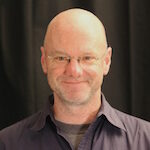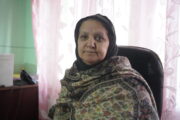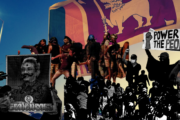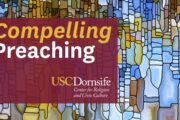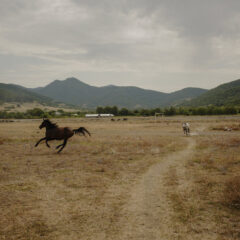Glory Moses, a pastor’s daughter, is no spiritual slacker. Other 20-year-olds in her native Kerala may be counting the days until the opening of Kochi’s mammoth Lulu Mall—billed as the largest shopping center in India outside Mumbai. But Moses, a student at a girls’ school affiliated with Doulos Bible College, is up before dawn every morning for about two hours of prayer. Her school day, punctuated by periods of Bible study and meditation, officially ends at 6:00 pm with more prayer. But she prays on her own for another hour before midnight and again between 1:00 and 2:00 am.
“That’s when it’s easiest to get authority over the evil spirit,” she says.
An improbable mixture of religious fervor, socialist politics and centuries-old cosmopolitanism constitutes Kerala’s heady cultural brew. Indians commonly refer to the state, which has a population of about 35 million, as their country’s Bible Belt. To wit, Doulos (the word means “servant” in New Testament Greek) is one of about a dozen training centers for pastors and lay evangelists within an hour’s drive of Kochi. And in a country dominated by Hindus, Christians constitute slim majorities in several towns on the edge of Kochi’s urban sprawl.
Yet interspersed among the shiny commercial developments and mushrooming churches that line the state’s well-maintained highways are rows of red flags emblazoned with the Communist movement’s hammer and scythe. As the Indian writer Akash Kapur noted in a seminal essay on Kerala, a long history of international trade and a general openness to outsiders have made the state fertile ground for political as well as religious practices that are distinct from the more insular social ethos that prevails in other parts of India. This lively idiosyncrasy explains why Kerala is the only state controlled by India’s ruling Congress party that has declined to implement key components of the central government’s supply-side economic reforms. It also makes the region an ideal laboratory in which to study the development and evolution of renewalist movements, which have readily taken root and flourished there.
Abraham and Molly Pothen, Fuller Seminary graduates who returned to India to found Doulos in the 1990s, are senior leaders in the Sharon Fellowship Church, a Pentecostal movement with over 2,000 small congregations, mostly in Kerala and other southern states. They supervise about 250 students in the campuses affiliated with the school. The primary purpose of the institution, according to Abraham Pothen, is to nurture the growth of their religious network.
“Ninety-five percent of our graduates will be pioneer ministers,” Pothen said. “They’ll go into new areas where there is no church.”
Glory Moses’ religious ardor and the Pothens’ commitment to cell group-style evangelism are typical of the growing edges of Protestant renewalist movements in southern India. Long-established denominations like the India Pentecostal Church (IPC) often cling to orthodoxies—a prohibition against jewelry, for example—that diminish their appeal to younger believers. A heavier reliance on organizational and pastoral authority also makes their rate of growth sluggish in comparison to upstart churches like Heavenly Feast and Master Ministries. These “post-Pentecostal” or “new generation” movements train lay people to seed most of their new churches (degrees in business or engineering are more common among young leaders than advanced theological degrees), though a strong emphasis on what believers call “gifts of the Holy Spirit”—particularly supernatural healing—still places them within the renewalist stream of global Christianity.
A whirlwind tour of some of Kerala’s Pentecostal institutions, both venerable and fledgling, brought to mind a number of possible similarities between the early Jesus movement and the culture of modern-day believers who identify their own experiences with biblical descriptions of that movement’s earliest apostles. Cell groups, decentralized authority and a yearning for “signs and wonders” are the most obvious parallels. But I also wondered whether, on a deeper level, the “fifth column” spirituality practiced by some of Kerala’s Christian minority—in a culture already afflicted with religious strife, turbulent political currents and the pains associated with economic change—implicitly invites and even valorizes the kind of persecution that pre-Constantinian Christians frequently suffered.
In fact, oppression at the hands of non-Christians—strangers, family members or both—figured into the testimonies of many of the classical as well as “new generation” Pentecostals I met. One member of the faculty at a Pentecostal seminary flatly declared, “Hindus and Muslims are possessed by demons.” That broadside indicated both the depth of many Christians’ sense of beleaguerment as well as the relative scarcity of tolerance and goodwill in many parts of Indian society, Christian and non-Christian alike.
At the end of my trip to Kerala I found myself wishing I’d had time to get a broader angle on the state’s astonishing array renewalist movements. How do non-Christians perceive them? Do the healings that are the main attraction for many of the groups complement the kind of care offered to the poor by, say, non-sectarian NGOs? Are conversions among non-Christian participants in Catholic Charismatic events—which attract thousands to venues like the Divine Retreat Centre each week—as disruptive of family and community relationships as Pentecostal “sheep stealing”? What are the functional as well as philosophical differences between tolerance and religious freedom?
These bedeviling questions will definitely shape my approach to upcoming travel related to the CRCC’s Pentecostal and Charismatic Research Initiative. Like Glory Moses, I hope my earnest efforts will allow me to gain some authority over my afflictions, even if only in the wee hours.
Nick Street was a senior writer with the USC Center for Religion and Civic Culture.

